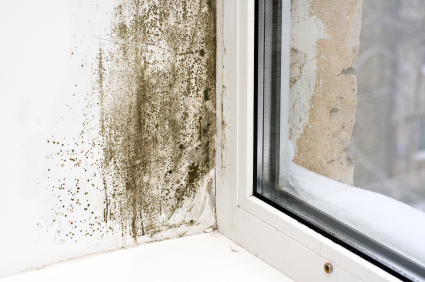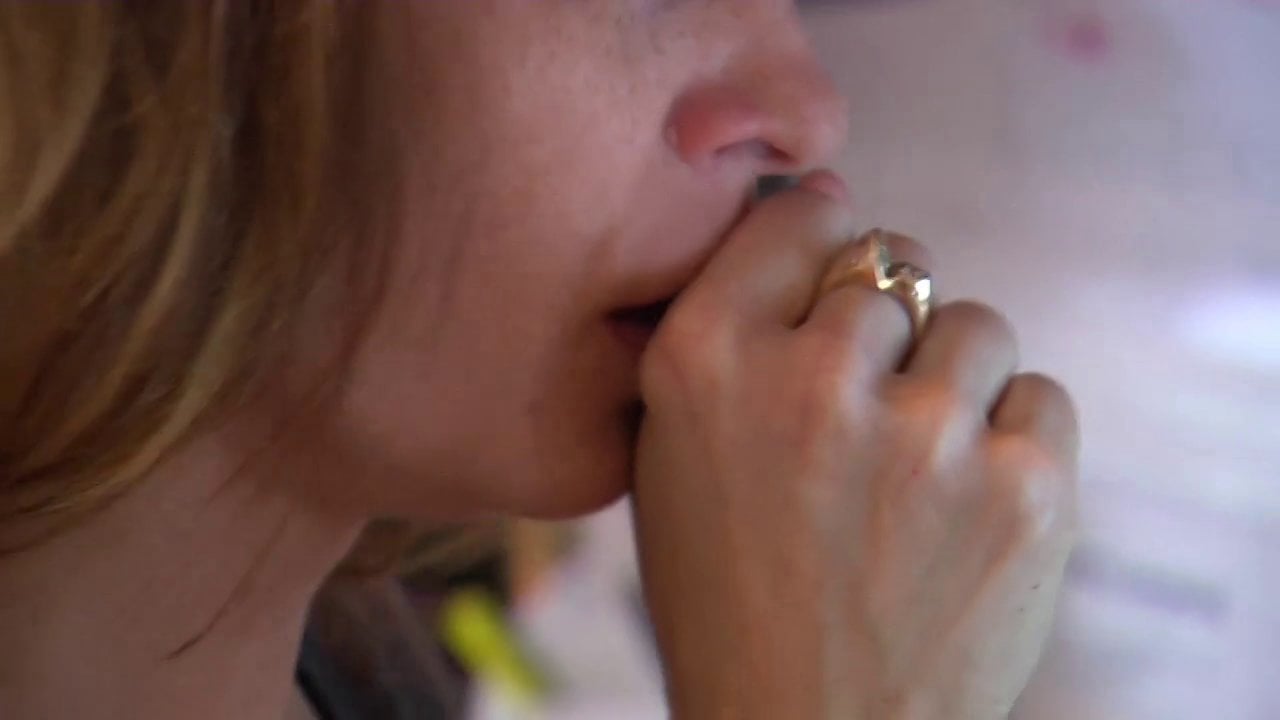How to Remove Mold from Painted Walls
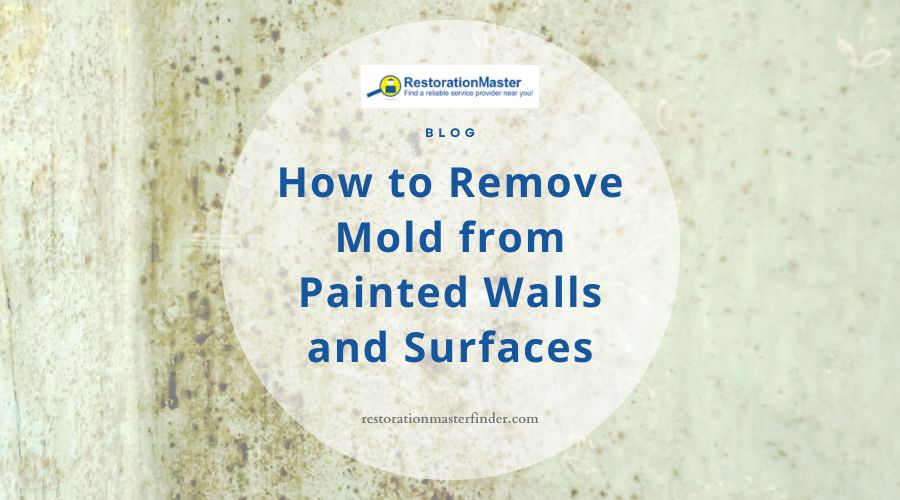
MoldMold is a type of fungus that grows in damp or humid conditi... More growth on painted surfaces such as the walls of your home or business can look very unpleasant, and aside from aesthetics, moldMold is a type of fungus that grows in damp or humid conditi... More can pose serious health risks such as asthma and other upper respiratory issues. It is important to understand when it is acceptable for you to clean moldy areas in your home and when you should call a professional mold removal company. You should also know that how moldMold is a type of fungus that grows in damp or humid conditi... More should be removed will depend on the type of material your wall is made of and how much moldMold is a type of fungus that grows in damp or humid conditi... More has contaminated the surface.
The reason for the growth of moldMold is a type of fungus that grows in damp or humid conditi... More on painted surfaces such as walls is due to extra moisture. Anytime there is extra moisture, the organic compounds from which the wall is made from allows for the formation of moldMold is a type of fungus that grows in damp or humid conditi... More. Oil-based paints are the most susceptible to moldMold is a type of fungus that grows in damp or humid conditi... More as they have more of these organic compounds.
The size of the moldMold is a type of fungus that grows in damp or humid conditi... More affected surface in your home or business is also very important. The Environmental Protection Agency suggests that you can clean a surface that is about 10 square feet, in other words approximately three by three feet. If you are dealing with a larger area of the wall that has been affected by moldMold is a type of fungus that grows in damp or humid conditi... More, you should contact a moldMold is a type of fungus that grows in damp or humid conditi... More removal company.
Here are a few reasons why these surfaces should be cleaned by professional mold removal technicians:
- You can make sure that you are not harming your health or the health of your loved ones by cleaning the moldMold is a type of fungus that grows in damp or humid conditi... More improperly, especially if the surface area is too large and you don’t have the proper equipment to do so.
- You can spread the moldMold is a type of fungus that grows in damp or humid conditi... More even further by not cleaning it properly.
- There might be moldMold is a type of fungus that grows in damp or humid conditi... More hidden inside, below, or behind the surface.
- There might be an issue with excess moisture that has not been addressed.
- You will need to remove the mold from your wall before you paint it. If you paint a wall that is moldy, the paint will peel and may cause even more moldMold is a type of fungus that grows in damp or humid conditi... More as it will get trapped below the paint.
How to Clean Mold from Painted Surfaces
If you are in fact dealing with a small area that has moldMold is a type of fungus that grows in damp or humid conditi... More, you can follow the below instructions for a clean-up process you can do yourself.
Make sure that you have the proper equipment first. Here is what you will need:
- Rubber gloves
- N-95 mask
- Goggles
- Bleach (household)
- Water
- Buckets
- Sponges or disposable rags
- Spray bottle
- Towel or dehumidifierA dehumidifier is a device that removes excess moisture from... More
- HEPA vacuum
These are the steps you should follow before starting the mold clean-up at your home or business:
- The moisture source needs to be identified, corrected, and fully dried.
- You should have all the personal protective equipment mentioned earlier ready and ensure that the area is well ventilated.
- All carpets, wallpaper, and any other wet items should be removed and properly disposed after you’ve double bagged them in 6-mil or thicker polyethylene bags. All other items such as large furniture or any other belongings should be properly covered and sealed with plastic and tape.
The removal of mold from painted walls should be done as follows:
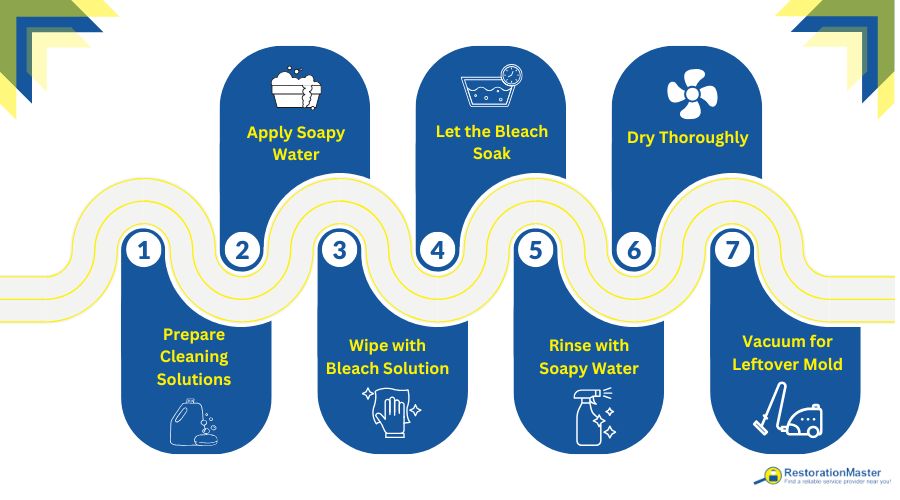
- Start by filling one bucket with soap and water and another with 1 gallon of warm water mixed with 1 cup of bleach.
- Use a spray bottle or spongeA sponge is a porous material used to absorb liquids or clea... More to wet any moldy areas with the soapy water.
- Take a separate spongeA sponge is a porous material used to absorb liquids or clea... More or rag soaked in the diluted bleach solutionA solution is a homogeneous mixture of two or more substance... More and wipe down the affected wall area.
- Allow the bleach solutionA solution is a homogeneous mixture of two or more substance... More to soak on the moldy area for about 10 to 15 minutes.
- Use a clean spongeA sponge is a porous material used to absorb liquids or clea... More or rag soaked in the soapy water to wipe down the moldy wall area, rinsing frequently until clean.
- Ensure the area is dried thoroughly with a towel or by using a dehumidifierA dehumidifier is a device that removes excess moisture from... More.
- Use a HEPA vacuum to clean any remaining dust or moldMold is a type of fungus that grows in damp or humid conditi... More, and remember to empty the vacuum into a sealed plastic bag.
MoldMold is a type of fungus that grows in damp or humid conditi... More can be an unsightly nuisance at your home or business, but it can also be harmful for your health. Therefore, it is important to react as soon as you encounter moldMold is a type of fungus that grows in damp or humid conditi... More at your property. If only a small area has been affected by moldMold is a type of fungus that grows in damp or humid conditi... More and you can clean it up yourself, make sure to follow the steps outlined earlier. If the area is larger, reach out to a reputable and certified moldMold is a type of fungus that grows in damp or humid conditi... More removal company so they can remove it properly and you will not have to worry about the moldMold is a type of fungus that grows in damp or humid conditi... More returning or spreading further and causing costly damage.
Call a Mold Remediation Professional
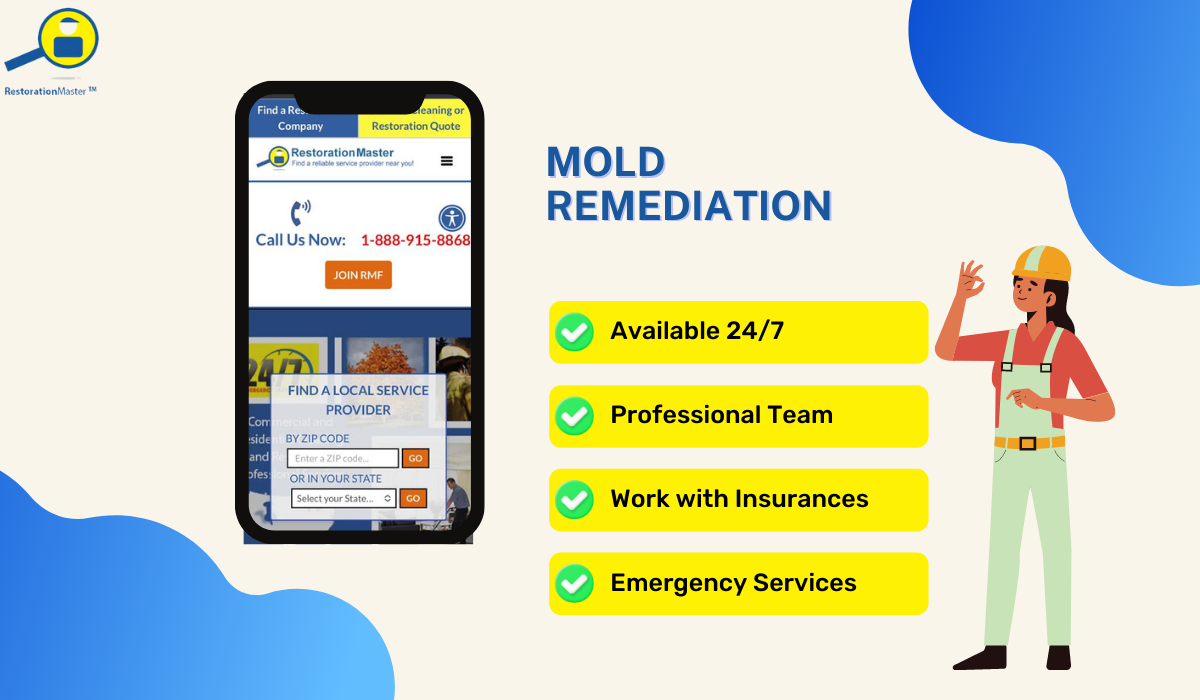
Are you experiencing moldMold is a type of fungus that grows in damp or humid conditi... More on a painted surface at your home or business? Make sure you call a mold remediation professional immediately to contain and remove the moldMold is a type of fungus that grows in damp or humid conditi... More growth. These professionals will find and remove all moldMold is a type of fungus that grows in damp or humid conditi... More from your property and fully restore the damaged areas, and they know how to treat painted surfaces affected by moldMold is a type of fungus that grows in damp or humid conditi... More.
Frequently Asked Questions
How to detect mold in walls?
To detect moldMold is a type of fungus that grows in damp or humid conditi... More in walls, follow these steps:
- Visual InspectionA visual inspection is the initial examination of a property... More: Look for discoloration, black spots, or fuzzy growth on the walls.
- Check for Water Damage: Look for water stains, peeling paint, or dampness that might indicate moisture.
- Smell Test: Notice any musty odors, which can signal hidden moldMold is a type of fungus that grows in damp or humid conditi... More.
- Moisture MeterA moisture meter is a device used to measure the moisture le... More: Use a moisture meterA moisture meter is a device used to measure the moisture le... More to check if wall moisture levels are high.
- Cut Open Test: If you suspect moldMold is a type of fungus that grows in damp or humid conditi... More inside the wall, carefully cut a small section of drywall to check.
- Professional Help: If unsure or if you find extensive moldMold is a type of fungus that grows in damp or humid conditi... More, contact a professional for testing and inspectionInspection is the careful examination and assessment of a pr... More.
What does mold smells like in the walls?
MoldMold is a type of fungus that grows in damp or humid conditi... More in walls often gives off a musty smell that can be described as earthy or stale. It might remind you of damp, decaying leaves or that distinct odorAn odor is a smell, often detectable by the human nose, whic... More you find in a wet basement. If you catch this scent, especially in areas prone to moisture or past water damage, it could mean there’s moldMold is a type of fungus that grows in damp or humid conditi... More lurking behind the walls.
Does Vinegar kill mold on walls?
Yes, vinegar can effectively kill moldMold is a type of fungus that grows in damp or humid conditi... More on walls. The acetic acid in vinegar has antifungal properties that can help eliminate many types of moldMold is a type of fungus that grows in damp or humid conditi... More. To use vinegar for moldMold is a type of fungus that grows in damp or humid conditi... More removal, simply spray undiluted white vinegar directly onto the affected area, let it sit for at least an hour, and then wipe it down with a clean cloth. While vinegar can kill surface moldMold is a type of fungus that grows in damp or humid conditi... More, it may not penetrate deeply into porousPorous describes a material that contains small openings or ... More materials, so more extensive moldMold is a type of fungus that grows in damp or humid conditi... More infestations may require additional treatment or professional help.










